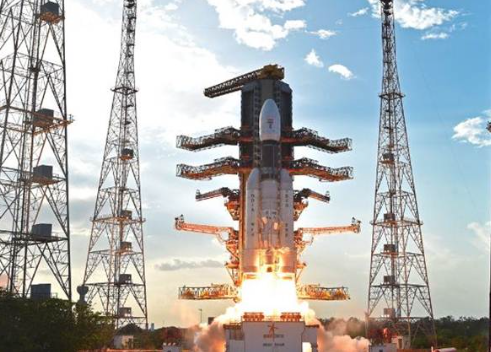
The GSLV Mk III, in the course of its first development flight, delivered the GSAT-19 satellite — the heaviest launched from Indian soil — to a geosynchronous transfer orbit following the launch at 5:28 pm. (Source: Twitter/ @isro)
Today is a historic day, ISRO's Chairman A.S. Kiran Kumar says. "Congratulations to the dedicated scientists of ISRO for the successful launch of GSLV – MKIII D1/GSAT-19 mission," Prime Minister Narendra Modi tweeted as the Indian Space Research Organisation (ISRO) on Monday successfully launched its heaviest and most powerful rocket yet, the GSLV-Mark III, which put the GSAT-19 satellite into orbit on Monday, June 05, 2017.
The rocket was launched from the Second Launch Pad (SLP) at Satish Dhawan Space Centre SHAR (SDSC SHAR), Sriharikota, and the launch is being seen an India's entry into the 'heavy-lift rocket club' that can put four-tonne satellites into space. The US, Russia, Europe, China and Japan have already accomplished this goal. This has been a 20-year developmental journey for GSLV-MkII that was very difficult for ISRO, in which is also had a compound effect that slowed development of the larger rocket, Mark III, by some five years, according to ISRO officials.
The amount of time and energy that was invested that CUSP (Cryogenic Upper Stage Project) and MkII demanded, “We could have completed the same [MkIII] activity five years back,” said Dr. Sivan, who named the elusive MkII the “naughty boy” of the Indian space. CUSP is the indigenous Cryogenic Upper Stage Project of MkII and is based on the complex Russian know-how that was used in six early GSLV flights (MkI). For MkIII, ISRO chose to use a different but simpler cryogenic path.
According to information in The Hindu, the Rs. 2,900-crore Mark III project was cleared in 2002, soon after the first MkII flight with the first Indian cryo stage was conducted in 2001. Preliminary MkIII activities also started and facilities for MkIII were getting set up, however, later the MkIII entered a slow down because of the glitches in achieving CUSP of MkII, ISRO Chairman A.S. Kiran Kumar said. The early GSLV MkIIs with the new Indian cryo stage continually failed, and as a result the same facilities that were also to be used for MkIII got locked up to correct and re-test MkII, Mr. Kiran Kumar and VSSC Director K. Sivan said separately.
During 2014-16MkIII went on to undergo its intensive development period with its stages and systems undergoing over 200 tests and a few modifications. Only after the MkII flight of January 2014 did ISRO resume tests on Mk III and work on its facilities.
GSLV-Mk III is capable of launching 4 ton class of satellites to Geosynchronous Transfer orbit (GTO). It is a three-stage vehicle with two solid motor strap-ons (S200), a liquid propellant core stage (L110) and a cryogenic stage (C25). GSLV-Mk III-D1 is the first developmental flight, carrying 3136 kg GSAT-19 satellite to a Geosynchronous Transfer Orbit (GTO). The vehicle is configured with a 5 m ogive payload fairing and slanted strap-on nose cone to provide aerodynamic robustness.
The two strap-on motors of GSLV Mk III are located on either side of its core liquid booster. Designated as ‘S200’, each carries 205 tons of composite solid propellant and their ignition results in vehicle lift -off . S200s function for 140 seconds. During strap-ons functioning phase, the two clustered Vikas liquid Engines of L110 liquid core booster ignited 114 sec after lift-off to further augment the thrust of the vehicle. These two engines continued to function after the separation of the strap-ons at about 140 seconds after lift -off.
The first experimental flight of LVM3, the LVM3-X/CARE mission lifted off from Sriharikota on December 18, 2014 and successfully tested the atmospheric phase of flight. Crew module Atmospheric Reentry Experiment was also carried out in this flight. The module reentered, deployed its parachutes as planned and splashed down in the Bay of Bengal.
And today, the first developmental flight of GSLV Mk III, the GSLV-Mk III-D1 successfully placed GSAT-19 satellite to a Geosynchronous Transfer Orbit (GTO) on June 05, 2017 from SDSC SHAR, Sriharikota.

